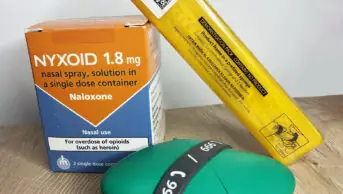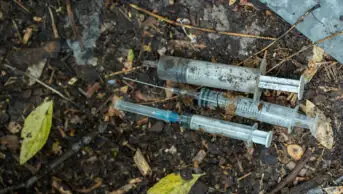
Shutterstock.com
There were 1,172 deaths related to drug misuse in Scotland in 2023 — a rise of 121 compared with the previous year — figures published by the National Records of Scotland (NRS) on 20 August 2024 have revealed.
However, despite this being the second lowest number of drug deaths since 2017, the NRS report on the 2023 data pointed out said that drug misuse deaths in Scotland are still much more common than when figures were first published in 1996, when 244 deaths were recorded.
The 2023 drug deaths figure was 2.7 times as high as the rate of deaths per 100,000 population in England and Northern Ireland and 2.1 times as high as in Wales, the report added.
Opioids — such as heroin, morphine and methadone — were implicated in 80% of the misuse-related deaths in 2023.
According to NRS, the average age of death from drug misuse has continued to rise over time, with nearly two-thirds (65%) of deaths in 2023 in people aged 35 to 54 years; whereas data from 2000 show that just over two-thirds (68%) of deaths related to drug misuse were among people aged up to 35 years.
The NRS report added that the link between deprivation and death from drug misuse was “much greater than with other causes of death”, noting that people in the most deprived areas of Scotland were more than 15 times as likely to die from drug misuse compared with people in the least deprived areas.
In a statement published on 20 August 2024, Neil Gray, Scottish cabinet minister for health and social care, said the latest figures were “hugely concerning”.
“[The Scottish government is] taking a wide range of actions through our £250m national mission on drugs, including opening a safer drug consumption facility pilot, working towards the opening of drug-checking facilities and widening access to life-saving naloxone,” he said.
“We will also continue to improve access to residential rehab, where we’re on track to meet our target for additional placements, and drive the rollout of medication assisted treatment standards to make treatment and support available more quickly.”
In October 2023, a naloxone emergency supply service was added to the Scottish community pharmacy public health service, meaning every community pharmacy in the country will be required to stock an emergency naloxone supply.
The UK’s first safer drug consumption facility is set to open in Glasgow later in 2024.
Commenting on the statistics, Laura Wilson, director for Scotland at the Royal Pharmaceutical Society (RPS), said: “The fact that the number of people dying from drug misuse in Scotland is increasing demonstrates that current policy is not as effective as we need it to be and emphasises the need for a holistic approach from Scottish government.
“The RPS has published a policy statement with 14 recommendations to reduce harm from drugs and drug deaths.
“Whilst we welcome the initial steps Scottish government has taken, particularly to expand the availability of naloxone within community pharmacies for emergency use, we need to see action to progress some of our other recommendations; including providing access to patient records for pharmacists to enhance patient safety, managing patients’ transitions between care settings and the faster introduction of safer consumption facilities.”
On 13 August 2024, representatives of families bereaved through drug misuse published an open letter calling for greater understanding of how families are affected.
“Training informed by lived experience would help staff better understand how substance use affects families, and how to make treatment and care welcoming for families”, the letter said.
“There’s an inseparable link between substance use and mental health, so more work must be done to make sure services are working together.”


